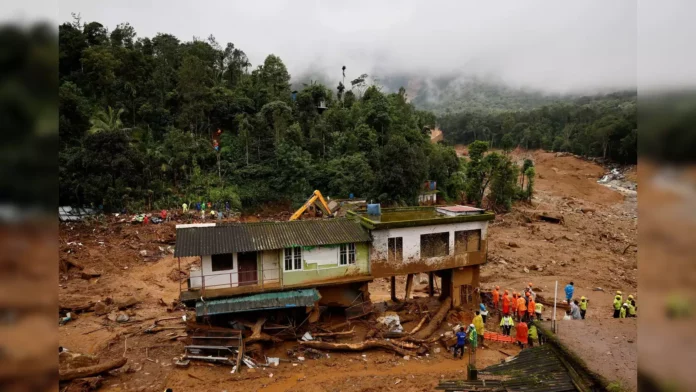WAYANAD: Kerala ADGP (law and order) MR Ajith Kumar said on Tuesday that the rescue and search operations in connection with the landslides that claimed over 300 lives in Wayanad have entered the last stage.
Ajith Kumar said that most of the accessible land area has been covered and the next focus will be to search the inaccessible areas.
Wayanad’s Chooralmala and Mundakkai were hit by massive landslides on July 30 claiming over 300 lives and creating widespread property damage. The search operations have entered the eighth day today.
“Rescue and search operation is getting into the last phase now. Land area is almost covered except for the slushy area where there are around 50-100 metres of mud. The mission is to reach inaccessible areas, with forest officials acting as guides since they know the area well.
He said that the focus for today will be on riverside and valley areas.
The ADGP further said that the weather in the area is not favourable and during the previous search operations, local volunteers got stranded in inaccessible areas so these commandoes will be airdropped on specific locations.
“The team consists of trained commandos, specifically SOG commandos. We are planning to airdrop the team within 6 km of Soochipara Waterfalls. After searching the area, if any bodies are found, we plan to airlift them,” Ajith Kumar said while speaking to ANI on Tuesday.
As per the officials, a scanning mission focusing on the Chaliyar River will be conducted today by a special team on a helicopter.
As per the State Health Ministry, the death toll stands at 308 as of August 2. 226 bodies and 181 body parts have been recovered so far and 180 people are still missing.
The Environment Ministry sources earlier said that the Kerala government allegedly approved numerous projects in Wayanad over the past four years, including those related to non-coal mining, without conducting a thorough study of the district’s topography and geomorphology.
“A combination of factors, including a lack of adequate study of the topography and geomorphology and insufficient safeguards against human activities such as large-scale urbanisation and tourism, have made the region more prone to disasters, appearing to be exacerbated by human impact,” the sources told ANI.
Scientists from the state and beyond attributed the disaster to a deadly mix of forest cover loss, mining in the fragile terrain and climate change. (ANI)
Also Read: Wayanad landslides: Over 200 deaths, bodies being recovered, says NDRF DIG Mohsen Shahidi







